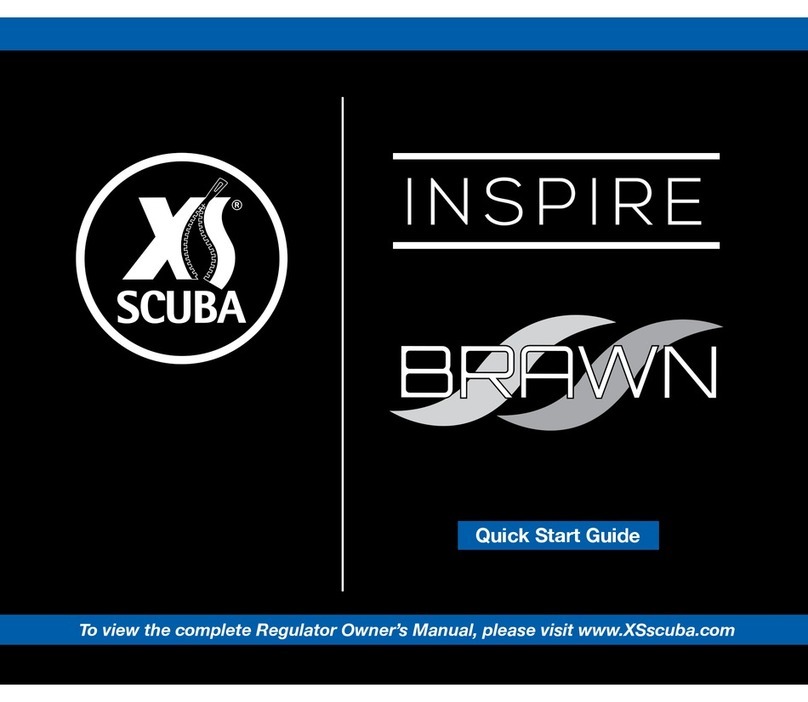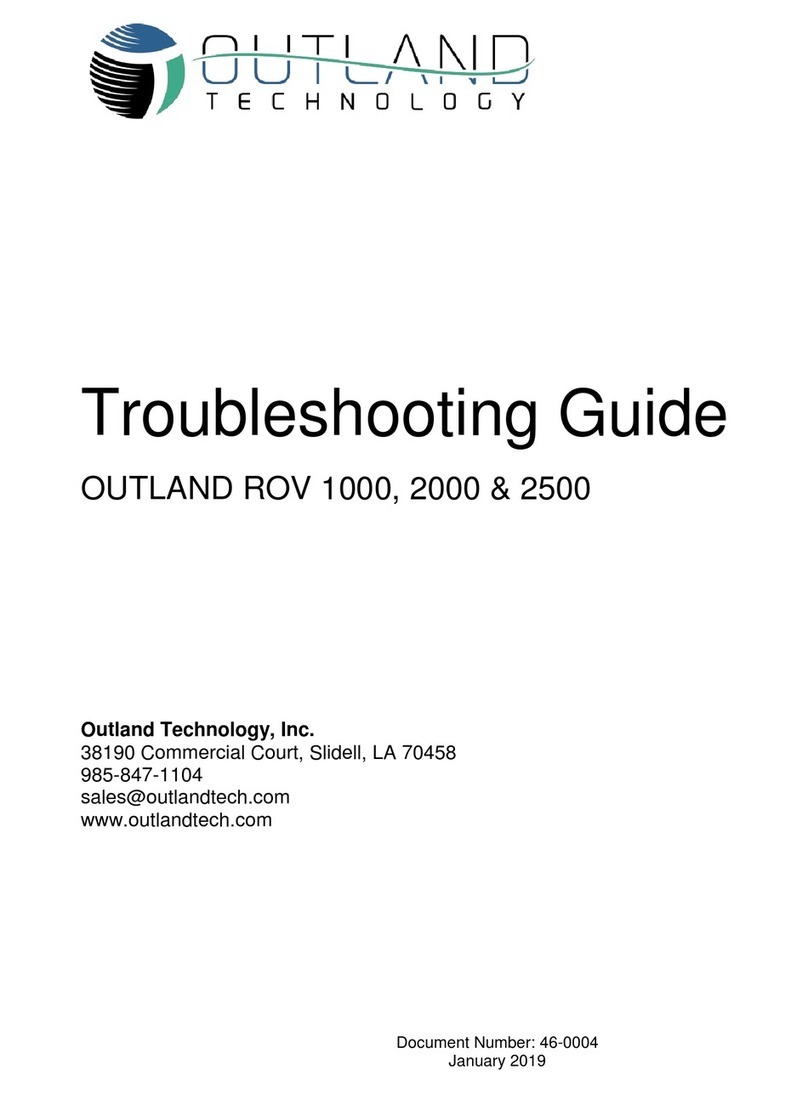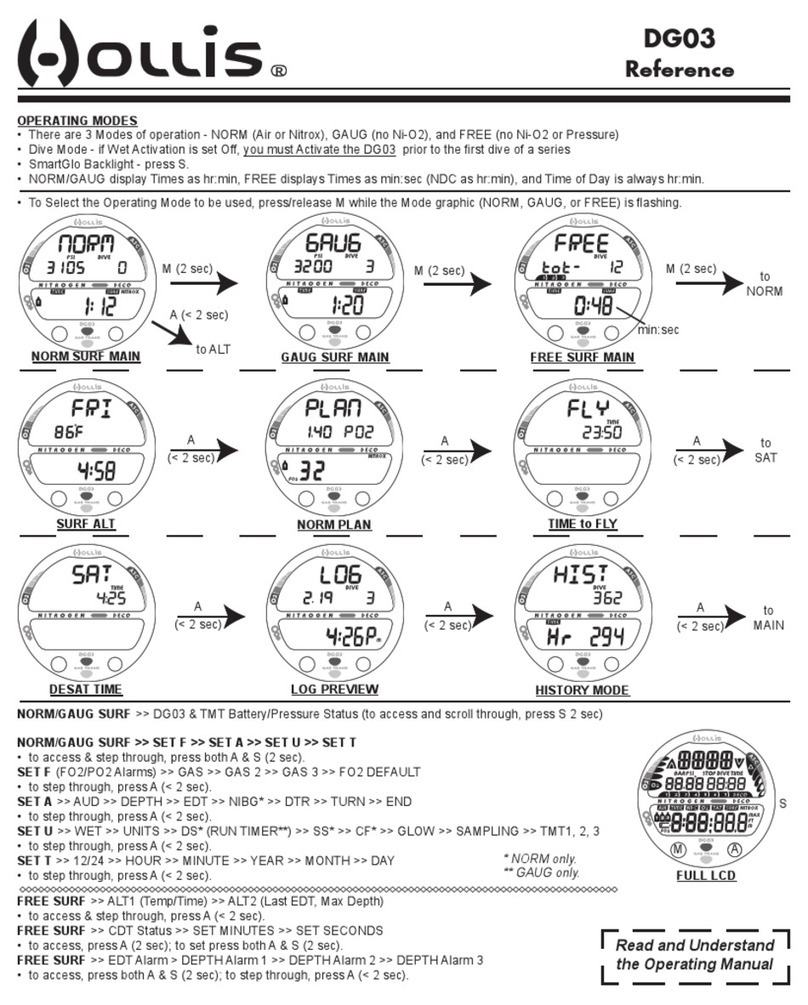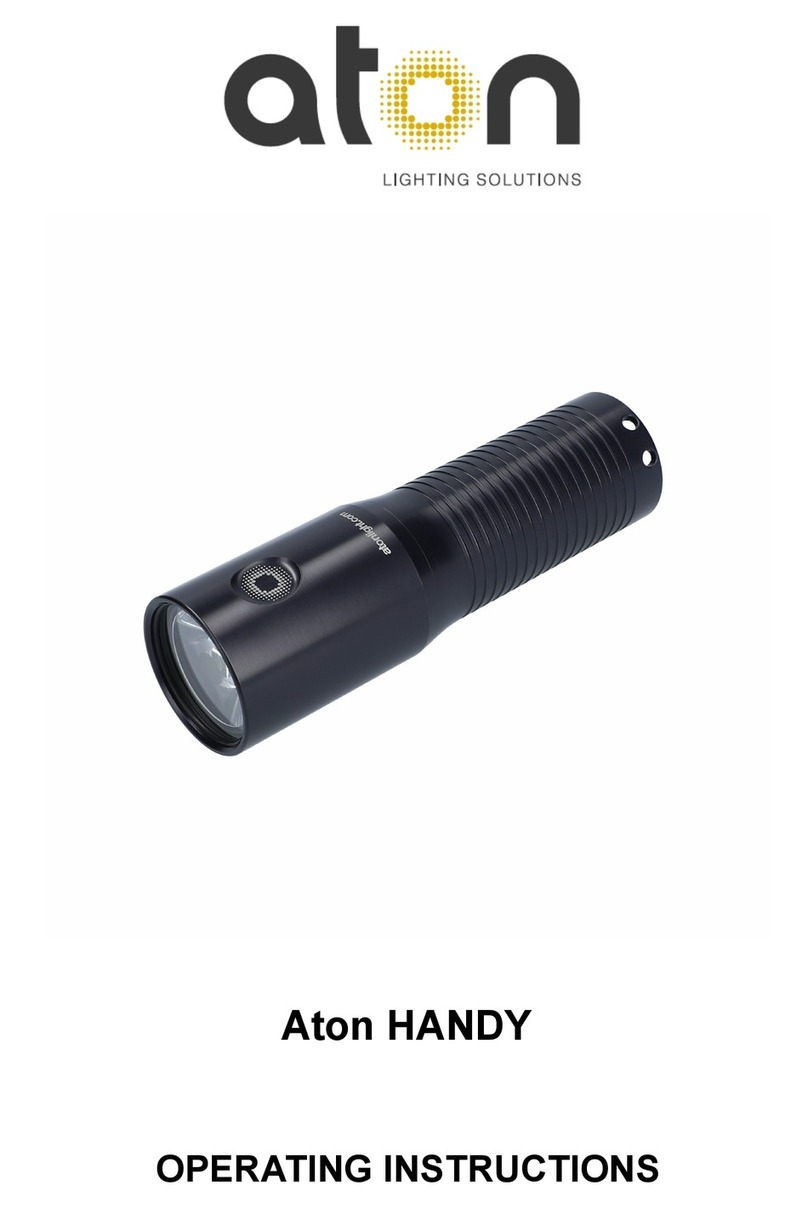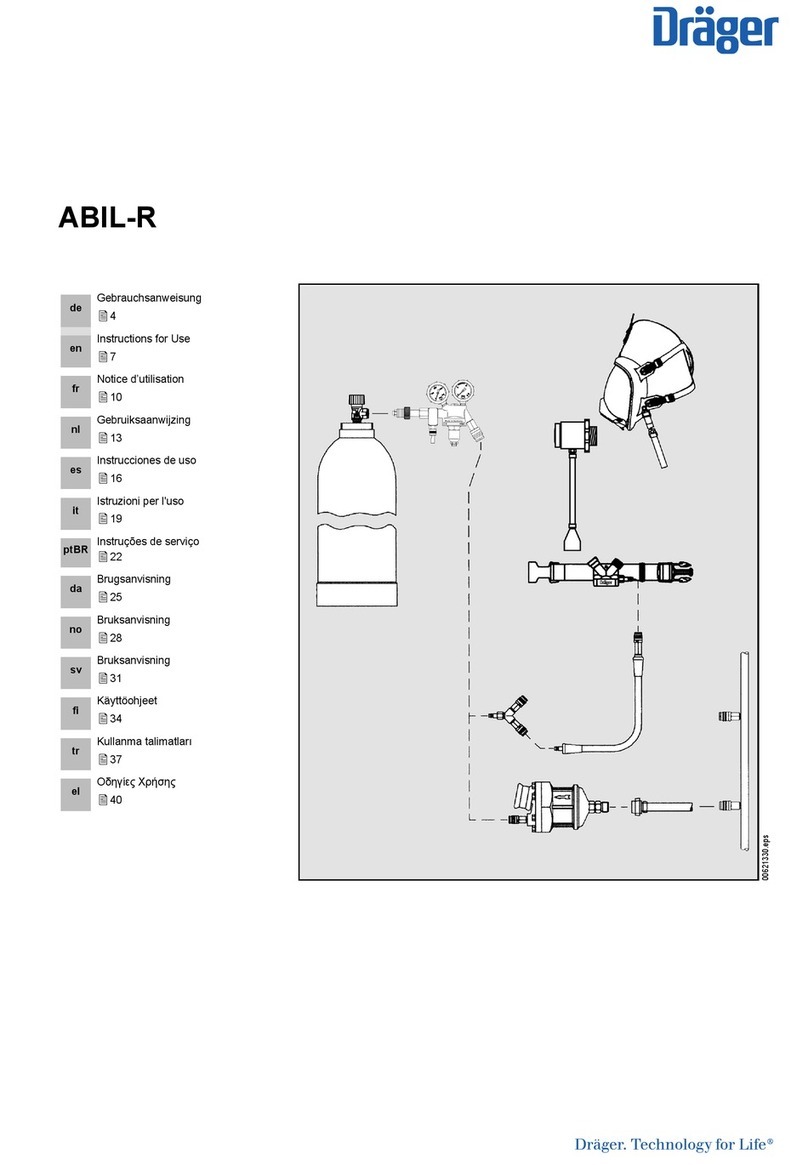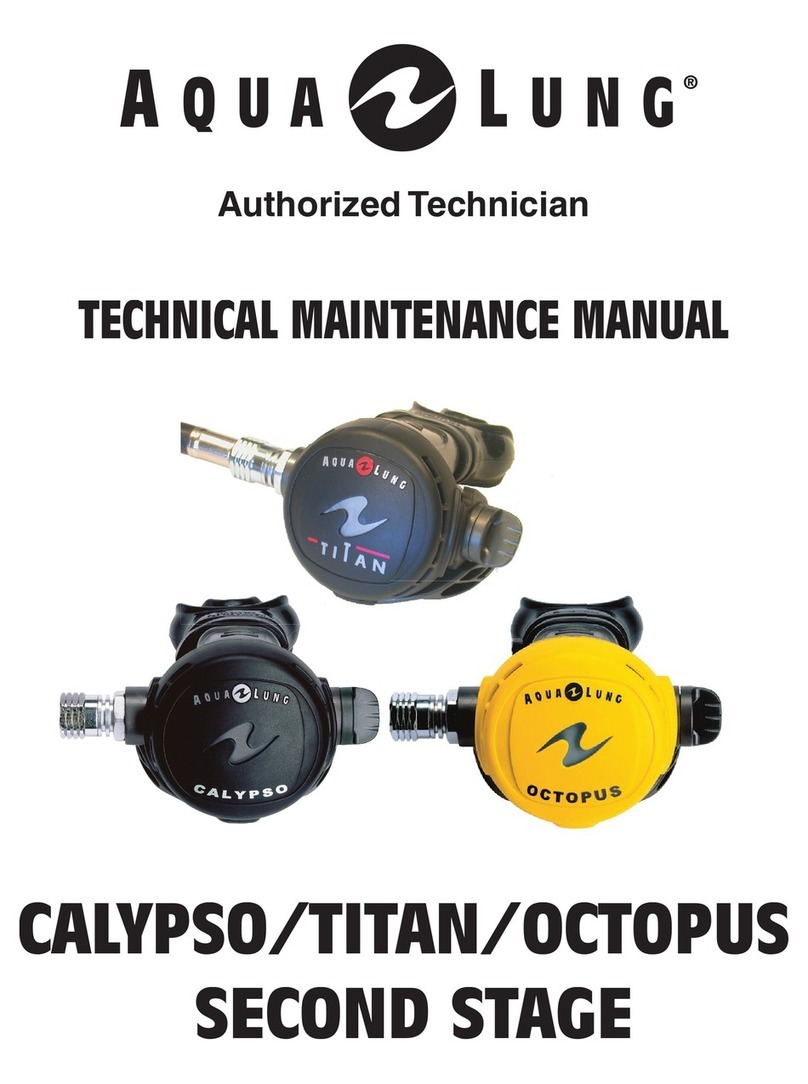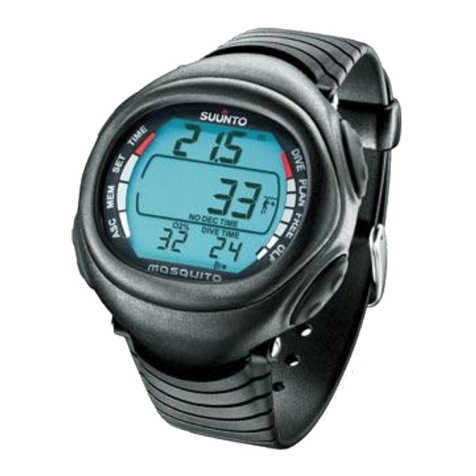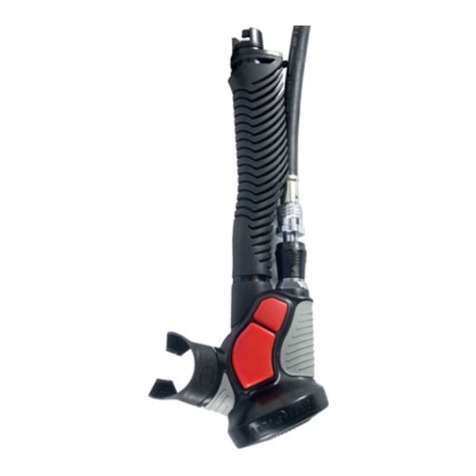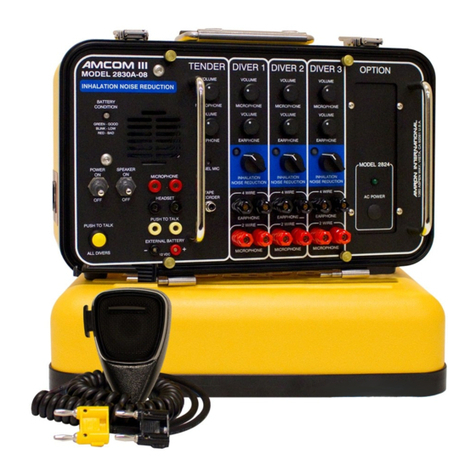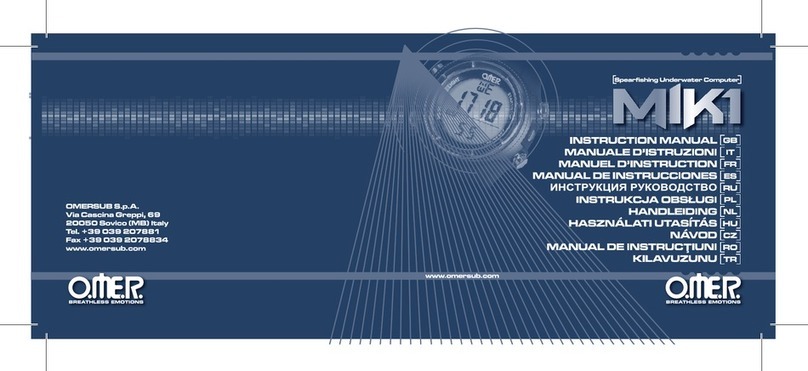Skipper GDS102 Specification sheet

Document no: DM-G002-SB
Rev: 1702
For software rev: 1.13.01
Edition: 2017-06-12
SKIPPER Electronics AS Telephone:+47 23 30 22 70
Enebakkveien 150 Telefax: +47 23 30 22 71
P. O. Box 151, Manglerud E-mail: support@skipper.no
0612 Oslo, Norway Co. reg. no:NO-965378847-MVA
www.skipper.no
GDS102
Operation and Installation Manual
Dual Channel Graphic Depth Sounder (10 - 265 kHz)

Page 2 of 77
SKIPPER Electronics AS
Edition: 2017-06-12
GDS102 Operation and Installation Manual
First Page Last PagePrev Page Next Page
Weitergabe sowie vervielfältigung dieser unterlage, verwertung
und mitteilung ihres inhaltes nicht gestattet, soweit nicht
ausdrücklich zugestanden. Zuwiderhandlungen verpichten zu
schadenersatz.
Toute communication ou reproduction de ce document,
toute exploitation ou communication de ou son contenu sont
interdites, sauf autorisation expresse. Tout manquement à
cette règle est illicite et expose son auteur au versement de
dommeges et intèrèts.
Copying of this document, and giving it to others and the use
or communication of contents thereof, are forbidden without
express authority. Oenders are liable to the payment of
damages.
Sin nuestra expresa autorización, queda terminantemente
prohibida la reproducción total o parcial de este documento,
asì como su uso Indebido y/o su exhibición o comunicación
a terceros. De los infractores Se exigirá el correspondiente
resarcimiento de daños y perjuicios.
IMPORTANT
When doing service or repair, please wait two minutes after power o, before unplugging
internal connectors.
Do not run the sounder for a long time with the transducer in air.
The transducer may be damaged.

Page 3 of 77
SKIPPER Electronics AS
Edition: 2017-06-12
GDS102 Operation and Installation Manual
First Page Last PagePrev Page Next Page
Contents
TERMINOLOGY.............................................................................................................................6
Units................................................................................................................................................................... 6
Abbreviations..................................................................................................................................................... 6
1. INTRODUCTION........................................................................................................................7
System Summary ............................................................................................................................................... 7
Transducers ........................................................................................................................................................ 7
Primary/Secondary Channels Concept .............................................................................................................. 7
Operator Panel and Data Entry .......................................................................................................................... 7
Fig. 1.1 Operator Unit Panel Layout.................................................................................................................. 8
Recorded Data Storage ...................................................................................................................................... 8
Fig. 1.2. System Diagram .................................................................................................................................. 9
Interfacing........................................................................................................................................................ 10
Outputs ........................................................................................................................................................................10
Inputs...........................................................................................................................................................................10
Alarms.............................................................................................................................................................. 10
Additional Features.......................................................................................................................................... 11
Auto Range..................................................................................................................................................................11
External Printer ...........................................................................................................................................................11
Options ........................................................................................................................................................................11
Remote Sounding Control...........................................................................................................................................11
Sound Speed Calibration.............................................................................................................................................11
2 OPERATION ...............................................................................................................................12
Parameter entry ................................................................................................................................................ 12
Fig. 2.1. Setting and Parameter Entry Flowchart........................................................................................................12
Operation Screens ............................................................................................................................................ 13
Primary Operation Screens (screen 1 - 3) ........................................................................................................ 14
Fig. 2.2. Screen 1. Gain, TVG and alarm settings. .....................................................................................................14
Fig. 2.3. Screen 2. Display and print settings..............................................................................................................15
Fig. 2.4. Screen 3. Power adjustment and options. .....................................................................................................16
Secondary Operation Screens (screen 4 - 12) .................................................................................................. 17
Fig. 2.5. Screen 4. Transducer details. ........................................................................................................................17
Fig. 2.6. Screen 5. Calendar and clock setting. ..........................................................................................................18
Fig. 2.7. Screen 6. Units of measurement. ..................................................................................................................19
Fig. 2.8. Screen 7. Interface setup screen....................................................................................................................20
Fig. 2.9. Screen 8. Recordings selection and play back..............................................................................................21
Fig. 2.10. Screen 9. Recordings options......................................................................................................................22
Fig. 2.11. Screen 10. NMEA control screen. ..............................................................................................................23
Fig. 2.12. Screen 11. System status screen..................................................................................................................24
Fig. 2.13. Screen 12. Oscilloscope screen...................................................................................................................25
Fig. 2.14. Screen 13, Alarm screen. ............................................................................................................................27
Principal Functions. ......................................................................................................................................... 28
Depth Range................................................................................................................................................................28
Picture Speed...............................................................................................................................................................28
Screen select..................................................................................................................................................... 29
Brightness (backlight) adjustment...............................................................................................................................29
Day/Night....................................................................................................................................................................29
Gain and TVG (Time Variable Gain) ..........................................................................................................................29
Digital indication.........................................................................................................................................................29
Frequency....................................................................................................................................................................29
Output Power ..............................................................................................................................................................29
Draught and Oset........................................................................................................................................... 30

Page 4 of 77
SKIPPER Electronics AS
Edition: 2017-06-12
GDS102 Operation and Installation Manual
First Page Last PagePrev Page Next Page
Alarm Settings.............................................................................................................................................................31
ALR(A): ......................................................................................................................................................................32
Alarm acknowledgement ............................................................................................................................................32
Alarm buzzer...............................................................................................................................................................32
Alarm ID .....................................................................................................................................................................33
Power failure warning.................................................................................................................................................33
External Printer Operation ............................................................................................................................... 34
Clock and Calendar Settings .......................................................................................................................................34
Data Logging (Recordings Memory)..........................................................................................................................34
System ON/OFF..........................................................................................................................................................34
Simulator.....................................................................................................................................................................35
Status Screen ...............................................................................................................................................................35
Oscilloscope Screen ....................................................................................................................................................35
Nonvolatile Parameter Memory. .................................................................................................................................35
Data type .....................................................................................................................................................................35
Basic Algorithm Considerations ...................................................................................................................... 35
Bottom detection .........................................................................................................................................................35
Ping to Ping ltering ...................................................................................................................................................35
3. INSTALLATION........................................................................................................................36
Standard System Supply .................................................................................................................................. 36
Transducer Installation..................................................................................................................................... 36
Single transducer location...........................................................................................................................................36
Dual tranducer location (fore/aft)................................................................................................................................36
Dual transducer installation(fore/fore)........................................................................................................................37
Installation Details ......................................................................................................................................................37
Fig. 3.1. Basic System Conguration..........................................................................................................................37
Transducer Junction Box ................................................................................................................................. 38
Fig. 3.2. Transducer junction box................................................................................................................................38
Operator Unit Installation ................................................................................................................................ 39
115/230 V selection on Combo Terminal board inside Display Unit..........................................................................39
Fig 3.3. Operator unit..................................................................................................................................................40
Fig. 3.4. AC Voltage selection and fuses.....................................................................................................................41
Voltage selection connectors and fuses, Terminal Board............................................................................................41
External Interface Ports...............................................................................................................................................42
Fig. 3.5. Data Communication Interfaces. ..................................................................................................................42
Fig. 3.6. Data Communication Interfaces. ..................................................................................................................43
Fig. 3.7. Back-up battery jumper JP200, on I/O board. ..............................................................................................44
Interfacing........................................................................................................................................................ 45
NMEA interface ..........................................................................................................................................................45
Alarm relay..................................................................................................................................................................45
External alarm reset input ...........................................................................................................................................45
Analogue interfaces.....................................................................................................................................................46
Transmitter trigger pulse and bottom pulse outputs....................................................................................................46
External printer connection.........................................................................................................................................46
EMC................................................................................................................................................................. 46
Repeaters/Slaves .........................................................................................................................................................47
Remote Keyboard........................................................................................................................................................47
Remote Sounding Control...........................................................................................................................................47
Optocoupler 2 output...................................................................................................................................................47
Terminal board connections............................................................................................................................. 48
Fig. 3.8. Terminal board connections..........................................................................................................................48
Input/Output Circuitry 1 .................................................................................................................................. 49
Fig. 3.9. Input/Output Circuitry 1 ...............................................................................................................................49
Input/Output Circuitry 2 .................................................................................................................................. 50
Fig. 3.10. Input/Output Circuitry 2 .............................................................................................................................50
Input/Output Circuitry 3 .................................................................................................................................. 51

Page 5 of 77
SKIPPER Electronics AS
Edition: 2017-06-12
GDS102 Operation and Installation Manual
First Page Last PagePrev Page Next Page
Fig. 3.11. Input/Output Circuitry 3 .............................................................................................................................51
4. START-UP AND SYSTEM ADAPTION ................................................................................52
System Adaptation ........................................................................................................................................... 52
Primary channel assignment .......................................................................................................................................52
Transducer installation position ..................................................................................................................................52
Screen presentation .....................................................................................................................................................52
Alarm limits ................................................................................................................................................................52
Buzzer control .............................................................................................................................................................52
Clock and calendar settings.........................................................................................................................................53
Language.....................................................................................................................................................................53
Units of Measurement.................................................................................................................................................53
NMEA Setup ...............................................................................................................................................................54
NMEA transmitted/output messages...........................................................................................................................54
NMEA received/input messages .................................................................................................................................55
Fig. 4.1. NMEA connector XJ402. .............................................................................................................................55
Frequency setup ..........................................................................................................................................................56
Filter setup...................................................................................................................................................................56
Fig. 4.3. SW1 bandwidth settings ...............................................................................................................................56
Fig. 4.2. Frequency settings ........................................................................................................................................56
Options............................................................................................................................................................. 63
Calibration, sound speed .............................................................................................................................................63
Remote Sounding Control...........................................................................................................................................63
Ping .............................................................................................................................................................................63
5. TROUBLE SHOOTING ...........................................................................................................64
High voltage measurement..........................................................................................................................................64
Fig. 5.1. Function LEDs, on terminal board. ..............................................................................................................65
Function LEDs. ...........................................................................................................................................................65
Typical Status Screen 11 Contents................................................................................................................... 66
6. USER MAINTENANCE ...........................................................................................................69
Transducer maintenance .................................................................................................................................. 69
Operator Unit Maintenance.............................................................................................................................. 69
7. SYSTEM SPECIFICATIONS .................................................................................................70
Functional Properties ....................................................................................................................................... 70
Performance ..................................................................................................................................................... 70
Transducer and Junction Box......................................................................................................................................71
Operator Unit Cabinet.................................................................................................................................................71
Dimensions ...................................................................................................................................................... 72
8. SERVICE.....................................................................................................................................73
CPU 6742VE Setup ....................................................................................................................................................74
Master Reset Procedure...............................................................................................................................................75
Upgrading Software ....................................................................................................................................................75
9. EMC MOUNTING KIT............................................................................................................76
10. WARRANTY AND UTILIZATION......................................................................................77
Warranty:.......................................................................................................................................................... 77
Utilization: ....................................................................................................................................................... 77

Page 6 of 77
SKIPPER Electronics AS
Edition: 2017-06-12
GDS102 Operation and Installation Manual
First Page Last PagePrev Page Next Page
Chapter: Terminology
Terminology
Units
Depth Meters (m), Feet (ft), Fathoms (ftm) or Braccias (br)
Picture speed min:sec / div
Speed Kilometer/hour (km), miles/hour(mi/h) or Knots (kn)
Temperature Degrees Celsius (oC)
Abbreviations
In addition, the following symbols are used on the runtime screens:
kHz KiloHertz. Frequency
TVG Time variable gain
DBT Depth below transducer
DBK Depth below keel
DBS Depth below surface
ALF Alert sentence complient to IEC62288 2014
ALR Alert sentence
TEMP oText for TEMPerature
In menu / setup screens, the following abbreviations are used:
NMEA National Marine Electrinics Standard NMEA-0183
LCD Liquid-Crystal Display
IEC International Electrotechnical Commission
IMO International Maritime Organization
AC Alternating Current
DC Direct current
V Voltage
mA MilliAmpere
VGA Video Graphic Display
UTC Coordinated Universal Time
m Meter
EMC Electro Magnetic Compatibility
Draught/Draft Draught is the distance from surface to lowest part of hull (keel).

Page 7 of 77
SKIPPER Electronics AS
Edition: 2017-06-12
GDS102 Operation and Installation Manual
First Page Last PagePrev Page Next Page
Chapter: 1. Introduction
1. Introduction
System Summary
GDS102 is a dual channel navigation sounder with a large colour LCD. The echo sounder graphics is
continuously shown on the LCD along with complete navigational details. It is possible to connect an
external printer to the operator unit. The sounder contains a Compact Flash which keeps 24 hours of
recorded information. Depth, time and all available navigation data are stored continuously so that the last
24 hours of information is always available. All this information may also be printed on the external printer.
All IMO (International Maritime Organization) requirements are met or exceeded. Comprehensive interfaces
are available including NMEA 0183 inputs and outputs.
Transducers
GDS102 is prepared for connection of 1 or 2 transducers with a resonant frequency in the range of 10 - 265
kHz. Transmitter stage of the transceiver PCB is tuned to impedance of 100 Ohm, so the transducer type (if
not supplied by SKIPPER) should be selected accordingly. Channel 1 is optimized for higher frequencies
(50 - 265 kHz), while channel 2 is for a lower frequency range (10 - 50 kHz). The operating frequencies for
both channels are preset in production to 50 kHz (ch 2) and 200 kHz (ch 1) or to customer specication. The
frequencies can be changed with DIP switches on the transceiver PCB, if necessary. See”Frequency setup”
on page 56 for further instructions.
Primary/Secondary Channels Concept
In order to avoid confusion if two transducers are used simultaneously, one of the channels is assigned as
primary, the other one - secondary. Assignment of these is programmable by the user, see “Fig. 2.5. Screen
4. Transducer details.” on page 17.
Data from the primary channel will always be used to set alarm, analogue outputs and in the NMEA standard
sentences. Note: If SKIPPER proprietary message is enabled, the depth information from both channels will
be provided and can be recognized by NMEA listeners. See”Maximum range scale in use, meters.
Oset from transducer, meters.” on page 54 for further details about SKIPPER
PSKPDPT format.
It is advisable, that the channel which has a transducer with better installation and performance conditions
is assigned as primary. In most cases that would be the channel with a transducer installed forward. It is
also important that the primary channel is set to an IMO approved transducer for the whole system to be
approved. See “Primary channel assignment” on page 52.
Operator Panel and Data Entry
The operator unit contains a colour LCD, a keyboard with xed keys, soft keys and a rotating encoder. The
function of each soft key depends on the active screen. The buttons are labeled on the lower rim of the LCD.
Several screens are used to enter various settings and calibration parameters. Each screen has a selection
of soft key buttons. Screens 1 through 3 are primary operation screens with appropriate operator controls.
Screens 4 through 13 are calibration, setup and system supervision screens. The various screens will be
described in detail later.

Page 8 of 77
SKIPPER Electronics AS
Edition: 2017-06-12
GDS102 Operation and Installation Manual
First Page Last PagePrev Page Next Page
Chapter: 1. Introduction
The LCD is backlit, and backlight intensity may be adjusted by the user. Day or night vision modes can be
selected according to the ambient light conditions. The echogram is normally displayed continuously on the
LCD. An optional external printer can be connected, if hardcopy documentation is required. The operator
unit is normally ush mounted.
Recorded Data Storage
Depth and other navigational data are continuously stored for 24 hours in non-volatile memory (Compact
Flash). See “Data Logging (Recordings Memory)” on page 34. An EPSON LQ-350 printer with
Centronics (parallel) interface may be connected for a paper copy, (ask SKIPPER for printer specication).
Alternatively HP Deskjet printer or Epson D88 printer may be used. Printer is only required when hard copy
documentation is necessary.
Warning
False bottom echoes may occur when:
• The bottom is out of range.
• Extreme noise conditions are present.
• Bottom signal may be lost for other reasons, like wakes, or aeration below transducer.
Fig. 1.1 Operator Unit Panel Layout
Graphics
Soft key
texts
Soft keys
Depth
range
Picture
speed
Screen
select
Day/Night Brightness
Encoder
Fixed keys

Page 9 of 77
SKIPPER Electronics AS
Edition: 2017-06-12
GDS102 Operation and Installation Manual
First Page Last PagePrev Page Next Page
Chapter: 1. Introduction
Fig. 1.2. System Diagram

Page 10 of 77
SKIPPER Electronics AS
Edition: 2017-06-12
GDS102 Operation and Installation Manual
First Page Last PagePrev Page Next Page
Chapter: 1. Introduction
Interfacing
The GDS102 has various interface possibilities.
Outputs
• Transmitter trigger pulse and bottom pulse outputs. See “Transmitter trigger pulse and bottom pulse
outputs” on page 46.
• Analogue outputs 0 - 10 V and 4 - 20 mA. See “Analogue interfaces” on page 46.
• NMEA 0183 interface outputs of depth information. See “NMEA interface” on page 45 and “Maxi-
mum range scale in use, meters. Oset from
transducer, meters.” on page 54.
• External alarm relay output. See “Alarm relay” on page 45.
• System malfunction optocoupler output.
• External printer and monitor. See “External Interface Ports” on page 42.
Inputs
• NMEA 0183 interface input of position, heading, speed and UTC (Coordinated Universal Time). See
“Maximum range scale in use, meters. Oset from
transducer, meters.” on page 54.
• External alarm reset. See “External printer connection” on page 46 and “Input/Output Circuitry 3”
on page 51.
• External control and synchronization of transmitter (optional). See “Remote Sounding Control” on
page 63.
Alarms
Shallow water alarm may be adjusted on screen 1. See “Fig. 2.2. Screen 1. Gain, TVG and alarm settings.”
on page 14. An NMEA alarm output message ALF or ALR or a relay output is provided in GDS102 for
interface to external alarm systems. An audible alarm is also provided, see “Fig. 2.12. Screen 11. System
status screen.” on page 24.

Page 11 of 77
SKIPPER Electronics AS
Edition: 2017-06-12
GDS102 Operation and Installation Manual
First Page Last PagePrev Page Next Page
Chapter: 1. Introduction
Additional Features
In addition to the features demanded by the IMO regulations, the following features are available:
Repeaters/Slaves
Graphic CRT or LCD display or digital depth slave repeaters may be connected to the system.
Auto Range
This feature will automatically adjust the depth range to maintain the bottom contour within the middle
half of the screen height, and is accessible on screen 3. See “Fig. 2.4. Screen 3. Power adjustment and
options.” on page 16.
External Printer
Printer for endless paper or inkjet printer for single sheets (ask SKIPPER for available types) may be con-
nected for hardcopy requirements.
Options
• Remote keyboard.
• Permanent reduction of output power for adaption to various transducers.
Non-standard features, available as options, which are not approved for normal use for navigation by IMO
(contact SKIPPER for more information) include:
Remote Sounding Control
This option lets the GDS102 being controlled remotely in continuous/edge/level/single (manual) ping
modes. It can be useful in case of multiple hydroacoustic installations to avoid interference between
dierent systems. If installed, this option is accessible on screen 3. See “Fig. 2.4. Screen 3. Power
adjustment and options.” on page 16.
Sound Speed Calibration
This option will enable adjustment of the sound speed value used for the depth calculations. The
standard value is 1500 m/s, but the user may set values from 1400 to 1550 m/s to accommodate accurate
propagation speed in known water conditions. If installed, this option is accessible on screen 3. See “Fig.
2.4. Screen 3. Power adjustment and options.” on page 16.

Page 12 of 77
SKIPPER Electronics AS
Edition: 2017-06-12
GDS102 Operation and Installation Manual
First Page Last PagePrev Page Next Page
Chapter: 2 Operation
2 Operation
When the installation is complete, and power is connected to the operator unit, the system is switched on-o
by a power switch inside the cabinet. See “Fig. 3.4. AC Voltage selection and fuses.” on page 41.
Parameter entry
The xed function buttons, the soft key buttons and the rotating encoder allow the user to adjust the
parameters, setpoints and other data. The following owchart illustrates the procedure for changing settings
and entering data. The various screens are shown in detail later.
Example of parameter entry
Suppose you want to enter a value of 800 m for the depth range. The present setting is 100 m. Press the
DEPTH RANGE button and keep it pressed while you turn the encoder clockwise. Observe the depth range
increase to 800 m, let go of the encoder and release the DEPTH RANGE button. You could also have started
from the standard value 1000 m and decreased to 800 m by turning the encoder counter-clockwise.
Buttons with less than 6 possible states or values can be operated without using the encoder at all. The setup
will be remembered when the unit is turned o.
Any Screen
Any valid fixed or soft key
Press button
once
Rotate encoder in either
direction to obtain desired
state or setting
Keep button pressed
Advances to next
fixed state or
value
Release
button
Check for
desired result
Fig. 2.1. Setting and Parameter Entry Flowchart

Page 13 of 77
SKIPPER Electronics AS
Edition: 2017-06-12
GDS102 Operation and Installation Manual
First Page Last PagePrev Page Next Page
Chapter: 2 Operation
Operation Screens
Each of the operation screens contains a graphic picture and a selection of up to 6 soft key buttons. The
various screens are selected by keeping the SCREENS button pressed and rotating the encoder in either
direction. Turning the encoder clockwise cycle the screens in the sequence 1 to 13, and counter clockwise
rotation cycles the screens in the sequence 13 to 1. Screens 1, 2 and 3, covering the primary functions, may
also be cycled by repeatedly pressing the SCREENS button.
The screen layouts are outlined in g. 2.2 through 2.13. The various soft key functions are described with
each screen.
Note: Some of the soft keys on the following pages appear “dimmed”. The reason for this, is that the screen
shots are taken in “demo” mode.
Note:The primary and secondary channels frequencies are indicated at the top of the screens along with
draught settings regardless of the selected screen and graphic screen layout. PRIMARY channel information
is marked by blue colour. (See below).
Primary channel
indication
Draught
indication
Time indication
manual or from
GPS
Draught
indication
Position
from GPS
Speeed
indication
from GPS
Heading
indication
from GPS
Depth type
indication

Page 14 of 77
SKIPPER Electronics AS
Edition: 2017-06-12
GDS102 Operation and Installation Manual
First Page Last PagePrev Page Next Page
Chapter: 2 Operation
Fig. 2.2. Screen 1. Gain, TVG and alarm settings.
Soft key Name Range/
value
Default
value
Description
1 SELECT
CHN
Ch1 / Ch2 Ch 2 Selected channel enables adjustment of GAIN and TVG. The frequency
of the channel is displayed next to the channel number.
2 GAIN 0 - 100 % Ch1: 55%
Ch2: 41%
Gain adjustment. (% represents range 1 - 50 dB). See “Gain and TVG
(Time Variable Gain)” on page 29 for further details about the gain
function.
3 TVG 0 - 100 % Ch1: 65%
Ch2: 60%
Time Variable Gain adjustment. (% represents 10 - 50 dB suppression).
See “Gain and TVG (Time Variable Gain)” on page 29 for further details.
4 MARK Line Mark line will be provided both on the screen and paper. (If printer is
active).
5ALARM ▲ 0 - 99 m 0 m Shallow water alarm adjustment. See “Alarm limits” on page 52 for
further details about alarm function.
6
Primary Operation Screens (screen 1 - 3)
The following gures show the operation of the primary operation screens. Some of the soft keys are
self explanatory. Refer to the corresponding chapter in “Principal Functions” for more information about
particular features. See “External Printer Operation” on page 34.

Page 15 of 77
SKIPPER Electronics AS
Edition: 2017-06-12
GDS102 Operation and Installation Manual
First Page Last PagePrev Page Next Page
Chapter: 2 Operation
Fig. 2.3. Screen 2. Display and print settings.
Soft key Name Range/value Default value Description
1 DISPLAY v.split / h.split
/primary freq
v.split Selection of screen layout (either vertical or horizontal split of the
total screen area, only primary transducer). Note: If only one of
the channels is being displayed, the other one can still be activated,
unless it is disabled by soft key LOCATION at screen 4. See “Fig.
2.5. Screen 4. Transducer details.” on page 17.
2 Not used.
3 DIGIT Small/large Small Selection of digital depth indication size.
4 PRINT O [not ready]
/on
O Start and stop of continuous printing. Note: If printer is not
connected, this button is “Dimmed” and can not be used.
5 SCREEN Print Screen hardcopy, can be used for documentation and trouble-
shooting.
6 SYSTEM On/o On Setting the sounder in standby mode, switching o the major
power consuming elements (transmitter, LCD screen etc.) The
sounder can be restarted by pressing any button. Note: The unit
is still energized!!! Do not perform any re-connections before
switching o the mains on the terminal PCB inside the cabinet.

Page 16 of 77
SKIPPER Electronics AS
Edition: 2017-06-12
GDS102 Operation and Installation Manual
First Page Last PagePrev Page Next Page
Chapter: 2 Operation
Fig. 2.4. Screen 3. Power adjustment and options.
Soft key Name Range/value Default value Description
1 SELECT
CHN
Ch1/Ch2 Ch 2 Selected channel enables adjustment of POWER, and
DRAUGHT. The channel frequency is displayed next to the
channel number.
2 POWER 1 - 100 % 50 % Transmitter power adjustment.
3 DRAUGHT 0.00 to 99.9 m 0.00 m Draught correction, distance between the lowest point of the
vessel (near the transducer) and the water surface. Setting to
zero will display the depth from the lowest point. Note: Set
individually for both channels.
Also see OFFSET on “Fig. 2.13. Screen 12. Oscilloscope
screen.” on page 25.
4 (optional) SOUND 1400 - 1550 m/s 1500 m/s Sound speed setting.
5 RANGE Manual/autorange Manual Automatic range control.
6 (optional) PING Continuous/edge/
level/manual
External sounding control.
Continuous - internal control of the soundings.
Edge - external control of the soundings, synchronized with
an edge (positive or negative) of the external signal.
Level - external control of the soundings, enabling/disabling
continuous soundings by the level of the external signal.
Manual (Single) - control of the soundings by pressing
PICTURE SPEED key.

Page 17 of 77
SKIPPER Electronics AS
Edition: 2017-06-12
GDS102 Operation and Installation Manual
First Page Last PagePrev Page Next Page
Chapter: 2 Operation
Fig. 2.5. Screen 4. Transducer details.
Soft key Name Range/value Default value Description
1 SELECT CHN Ch1/Ch2 Ch 2 Selected channel enables adjustment of LOCATION,
FREQUENCY, SCREEN POS, PRIMARY settings, explained
below. The frequency of the channel is displayed next to the
channel number.
2 LOCATION FWD/AFT/
PORT/STRB/
not inst./pos?
Pos? Transducer position. Information is being indicated on the
screen for easy reference to the transducer and used in SKIPPER
proprietary NMEA sentence. Note: If “not inst” (not installed)
is selected, the corresponding channel is not operative and will
never be displayed (single channel mode). One channel must
always be operative, therefore “not inst” can be selected only for
one channel at a time.
3 FREQUENCY 10 - 265 kHz Ch 1: 200 kHz
Ch 2: 50 kHz
Adjustment of the frequency of currently selected channel. Note:
The actual frequency of the channels must be programmed by the
DIP switches on the transceiver PCB. See “Frequency setup” on
page 56 for further instructions.
4 Not used
5 SCREEN POS (Left/right)/
(upper/lower)
Left Selects the screen position of graphical window of currently
selected channel. (Dependant of v.split/h.split screen 2).
6 PRIMARY Yes/no Ch 2 Toggles PRIMARY property of the selected channel. See
“Primary channel assignment” on page 52 for details.
Secondary Operation Screens (screen 4 - 12)
The following gures show the operation of the secondary operation screens.

Page 18 of 77
SKIPPER Electronics AS
Edition: 2017-06-12
GDS102 Operation and Installation Manual
First Page Last PagePrev Page Next Page
Chapter: 2 Operation
Note: If time and date information is received from external NMEA talker (e.g. GPS), soft keys 2, 3, 4 and 5
are not user adjustable.
Warning: If the clock is adjusted backwards, see “Fig. 2.10. Screen 9. Recordings options.” on page 22
cleanup records.
Fig. 2.6. Screen 5. Calendar and clock setting.
Soft key Name Range/value Default value Description
1 Not used.
2 YR.MONTH 01.04-... Year and month setting.
3DAY 1 - 31 Date setting.
4 HOURS 0 - 23 Hours setting.
5 MINUTES 0 - 59 Minutes setting.
6 Not used.

Page 19 of 77
SKIPPER Electronics AS
Edition: 2017-06-12
GDS102 Operation and Installation Manual
First Page Last PagePrev Page Next Page
Chapter: 2 Operation
Fig. 2.7. Screen 6. Units of measurement.
Soft key Name Range/value Default value Description
1 LANGUAGE English, French, Spanish,
German, Norwegian
English Screen language selection.
2 DEPTH Meters, feet, fathoms,
braccias
Meters Unit of measurement for depth.
3 VESSEL SPD Knots, km/h, mi/h Knots Unit of measurement for vessel speed.
4 SOUND SPD m/s, knots, km/h, mi/h, ft/s m/s Unit of measurement for sound speed.
5 Not used.
6 Not used.

Page 20 of 77
SKIPPER Electronics AS
Edition: 2017-06-12
GDS102 Operation and Installation Manual
First Page Last PagePrev Page Next Page
Chapter: 2 Operation
Fig. 2.8. Screen 7. Interface setup screen.
Soft key Name Range/value Default
value
Description
1 (Optional) ENABLE Pos/neg Positive Selection of polarity of remote sounding control signal.
Note: This function is operative, if remote sounding
control option is installed.
2 PULSE 100, 200, 400, 2000/nm 200/nm The number of pulses per nautical mile. Setup for pulse
input that can be connected to a speed log.
3 ANA UPPER 0 - 49 m 0 m Analogue output shallow limit, depth value
corresponding to 0 V (4 mA) on the analogue output.
4 ANA LOWER 1 - 5000 m 50 m Analogue output deep limit, depth value corresponding
to 10 V (20 mA) on the analogue output.
5
6 MAX RANGE 200 m
500 m
1000 m
1500 m
5000 m
500 m Selection of maximal operating range. The maximal
detectable depth is dependant on the frequency and
properties of the transducer. This setting can be used to
avoid unnecessary high range adjustments by the range
key.
Other manuals for GDS102
2
Table of contents



